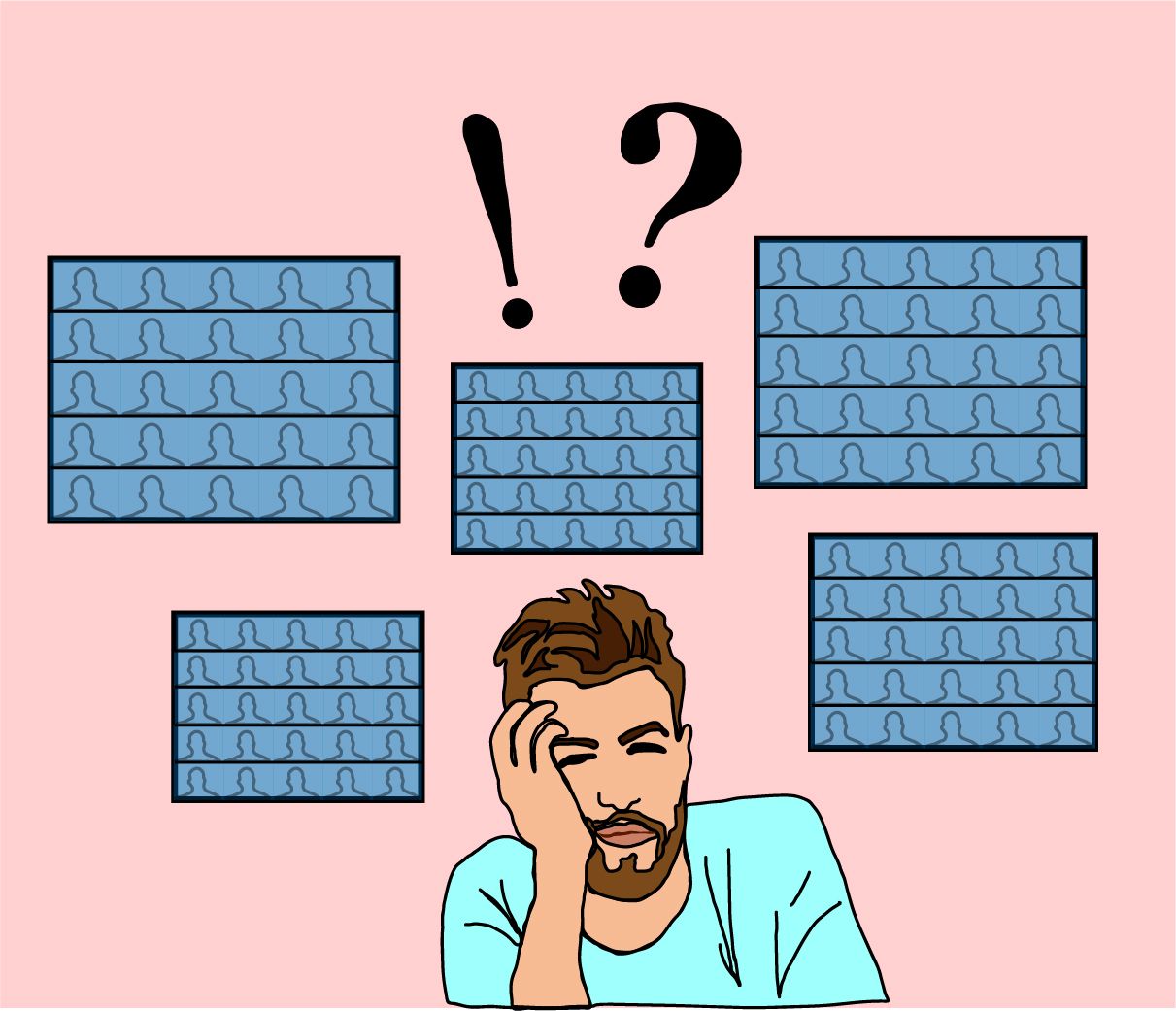Once upon a time, “zoom” was just a verb.
Then, in the blink of an eye, an unthinkable respiratory illness tore through the world, battered the economy and shuttered schools worldwide. In a few weeks time, zoom — the familiar onomatopoeic translation of “to move or travel very quickly” — became Zoom, a corporate symbol of Everything in the World That is Very, Very Bad.

Zoom slid into students’ lexicons early on: as universities from coast to coast uprooted students from their classrooms, dazed college kids circulated countless memes skewering the video conferencing platform. And when a late-to-the-game Northwestern uncovered its eyes and announced the college experience was going virtual, NU students joined the ranks and braved Zoom face to face — or rather, screen to screen.
We soon learned that if Skype walked so FaceTime could run, Zoom briskly paced. If the platform was a profession, it would rank as the Associate Vice Development Chair of teleworking, a high powered higher up that guzzles espresso between virtual meetings. It’s a modern day marvel, a souped-up videophone straight out of The Jetsons’ family home. A free plan caps call capacity at “intimate TED Talk” (100 participants), and virtual backgrounds, privacy settings and software updates make even FaceTime feel indie.
Forget teleworking and tele-learning. For the foreseeable future, employees will share their tele-life with tele-work-wives. Professors will tele-advise and tele-improvise, and students will tele-fantasize about on-campus nightlife. Zoom, indubitably, is the platform of choice, the unlikely locus where academics, extracurriculars and social life converge.
Here’s how we’ve come to live life in tiled screens: Class via video chat is non-negotiable, so shifting club meetings and friendships online seemed the logical choice. It began sincerely, with exec board members smiling through the awkwardness and vowing that, yes, the show or dance or conference or debate would go on, someway and somehow. All in a day’s work, those virtual club meetings trailed Zoom discussion sections and preceded Netflix Parties with friends, in which the resident extrovert insisted the group video chat while watching Portlandia.
I’ve nailed the art of timing, watching the hands on my wall clock tick by to ensure I join meetings with 30 seconds to spare. Distracted by my itty-bitty frowning face, I conceal my profile but, without fail, end up staring at myself for the class’ duration. I probably look disheveled, so why not monitor my every blink by showing self view? As I balance virtual advising appointments, digital club meetings and online classes, I dread emails stuffed with Zoom meeting IDs. The word itself has acquired a sinister edge: When a professor emphasized his fast grading and promised he would “zoom through our assignments,” my class collectively cringed.
Scholars and psychologists are calling it “Zoom fatigue” — the rub-your-eyes exhaustion that wrecks concentration after a 45-minute video call. The platform takes front facing thumb selfies to new heights, extinguishing the body language cues required for genuinely good conversation. Peppered with “ums,” “uhs,” “sorrys” and “no you gos,” these calls are gawky and strained. They’re stressful, and they certainly don’t replicate in person interaction.
But a foolproof solution that quashes Zoom fatigue without stifling socialization exists — and it’s only a few rings away. I present: a telephone. Seriously, what ever happened to old fashioned phone calls? Those god-forsaken agents of ancient conversations — wishing your grandparents happy birthday or sparing with an American Airlines representative — surely get the job done. Not every meeting necessitates Zoom when a phone call does the trick, and many phone calls prove more effective as well written emails.
For emails: it’s as if we’ve forgotten texts, direct messages, even snail mail exist. But we shouldn’t overlook these modes of communication, these fragments of life pre-pandemic as powerful ways to stay in touch. Beyond streamlining video calls, these overlooked alternatives can encourage connection in unconventional ways. In fact, 24/7 communication isn’t a requisite for a robust club or a healthy friendship; there’s something special about receiving a GIF from a friend after weeks of radio silence, a bite-sized reminder that even distance can’t extinguish camaraderie.
Beneath isolation’s impending shadow, college students are reasonably craving connection. Connection… remember it? That relic of a bygone era, the typical variety of which we shared face-to-face or eye-to-eye interaction. But when world affairs are decidedly atypical, why try to replicate IRL interaction in ways we formerly deemed fit? In these uncertain-unpredictable-unprecedented times, perhaps recreating in person contact imparts the illusion of normalcy. But at a certain point, soul sucking video calls simply threaten productivity.
We shouldn’t give up on Zoom. Relish the novelty of a call’s first ten minutes — and reserve video chatting for special occasions (singing Happy Birthday to a quarantined relative, reconnecting with a childhood friend). Recapping club funding and discussing leadership changes, however?
Those calls can do without a screen full of face.